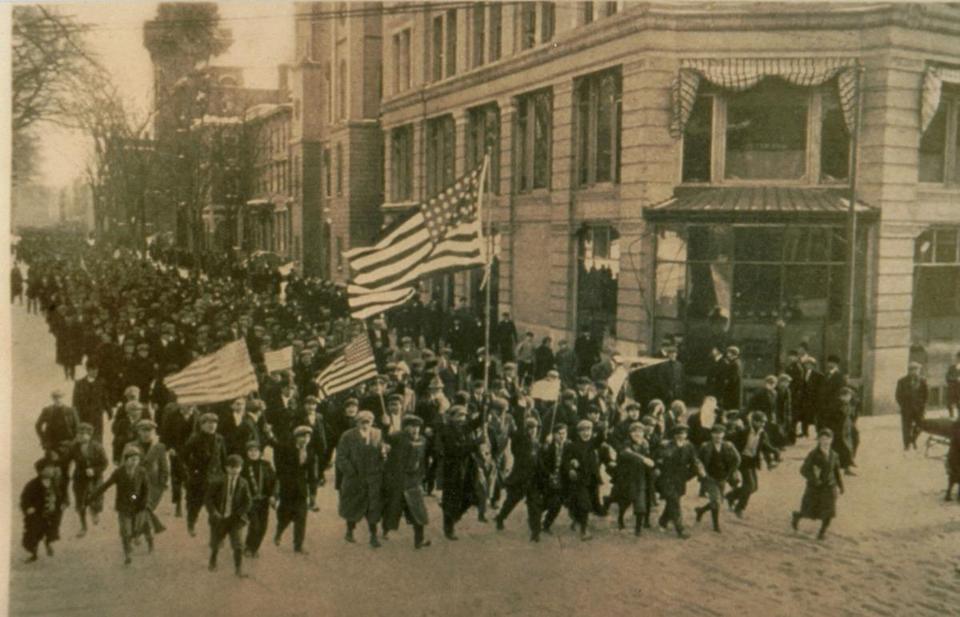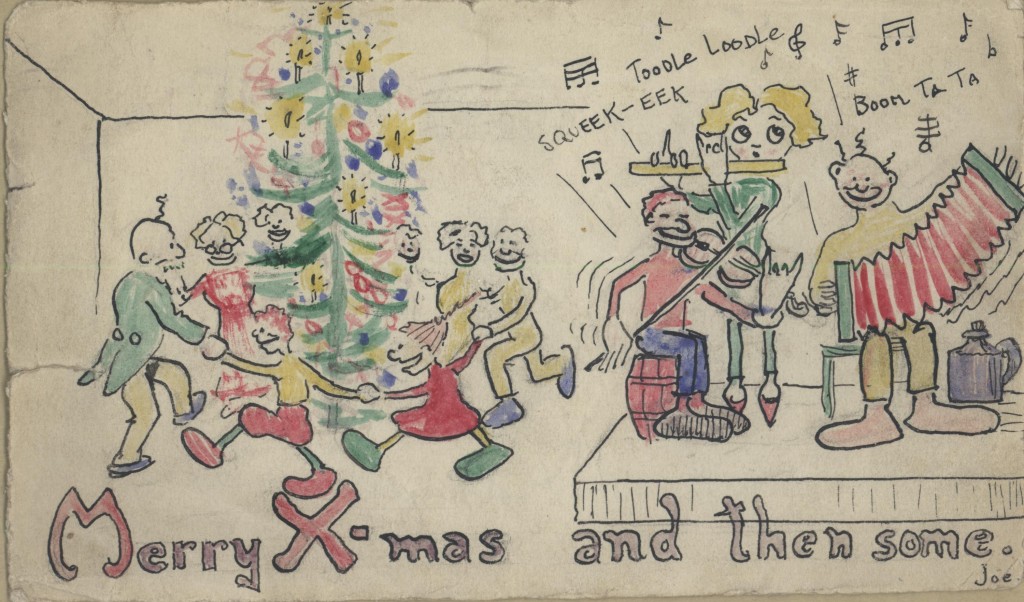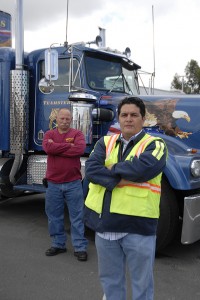May 1st, 2012
No Work * No School * No Shopping * No Banking
READ:
From NOEBIE.net
Brian K. Noe · ·
May 1st, 2012
No Work * No School * No Shopping * No Banking
READ:
Brian K. Noe · ·
Greek hospital now under workers’ control. [libcom.org] – Health workers in Kilkis, Greece, have occupied their local hospital and have issued a statement saying it is now fully under workers control.
Brian K. Noe · ·
The Starbucks in this article is on the Fort Belvoir Army Base and is operated by the Army and Air Force Exchange Services.
Fort Belvoir Starbucks Charges Nine Employees Thousands for Drinks. [Mount Vernon, VA Patch] – Starbucks manager Stacy McDonald worked at the Fort Belvoir location for more than five years. As of Wednesday, she was fired after the company accused her of stealing $3.75 worth of merchandise while on the job. Eight months pregnant, she has lost her health insurance and more than 200 hours of sick time that she was planning to use for maternity leave.
Apparently there are conflicting policies involved.
AAFES’s policy states that while employees are on shift, they are authorized to have unlimited brewed coffee, tea, and fountain soda. However, Starbucks’ policy allows just one free beverage during work hours. The expectation is every barista is to sample coffee, espresso, milk and pastries to ensure quality and knowledge to provide effective information to customers.
One of the employees was being charged more than $600 for adding milk and lemonade to her “unlimited tea.” One employee owed $13,951.
At least these employees have union representation to help them fight these charges. Many baristas do not.

Brian K. Noe · ·
Brian K. Noe · ·
Today marks the 100th anniversary of the Bread and Roses Strike in Lawrence, Massachusetts – a formative moment in American Labor history, and an inspiration to workers and lovers of liberty to this day.
Solidarity!

Bread and Roses a Hundred Years On. [Industrial Worker] – Though 100 years have passed, the Lawrence strike resonates as one of the most important in the history of the United States. Like many labor conflicts of the 19th and early 20th centuries, the strike was marked by obscene disparities in wealth and power, open collusion between the state and business owners, large scale violence against unarmed strikers, and great ingenuity and solidarity on the part of workers. In important ways, though, the strike was also unique. It was the first large-scale industrial strike, the overwhelming majority of the strikers were immigrants, most were women and children, and the strike was guided in large part by the revolutionary strategy and vision of the Industrial Workers of the World (IWW).
100 years later, Bread and Roses strike still resonates. [The Boston Globe] – The Bread and Roses Strike, not only called attention to horrific conditions in the mills, but also to the concentration of wealth and power in the United States,an issue that 100 years later would spur protesters to Occupy Wall Street, Boston, and other cities across the country.
100 Years After Lawrence Strike, the Cry for ‘Bread & Roses’ Still Resonates. [In These Times] – The strike that started on January 12, 1912, created political tremors far beyond the Merrimack Valley. The shutdown of mills in Lawrence forced a national debate about factory conditions, child labor, the exploitation of immigrants and the free exercise of First Amendment rights during labor disputes.
Bread and Roses: The 1912 Lawrence textile Strike. [Joyce Kornbluh, The Lucy Parsons Project] – Early in January 1912 I.W.W. activities focused on a dramatic ten-week strike of 25,000 textile workers in Lawrence, Massachusetts. It became the most widely publicized I.W.W. conflict, acquainting the nation with the plight of the unskilled, foreign-born worker as well as with the organization’s philosophy of radical unionism. “Lawrence was not an ordinary strike,” wrote Brissenden in 1919, “It was a social revolution in parvo.”
100 Year Anniversary of Bread and Roses Strike. [Uprising Radio] – Given today’s economic climate and the rising opposition to wealth inequality in the US, the history of the Bread and Roses strike of 1912 is particularly relevant.
Remembering the Fight and Spirit of “Bread and Roses.” [Common Dreams] – The strike lasted for two months. The workers marched daily, singing union anthems, and later listening to organizers. They faced clubs, bayonets, and frequent arrests. Many were hauled off to jail, children in tow. One, Annie LoPizzo, was shot and killed by the police.
Documentary Shows Strike “From The Workers’ Point of View.” [Merrimack Valley Eagle Tribune] – Making movies and local history are close to Tom Gradzewicz’s heart. He has combined his two passions to create “The Strike Heard ‘Round the World: Bread & Roses 1912,” which will be broadcast on community access television stations throughout Greater Lawrence.
A Century of Writing on the IWW. [IWW.ORG] – An annotated bibliography prepared for the IWW Centennial in 2005.
Bread & Roses Centennial Committee Website
Bread and Roses/Makhnes Geyen. [Boston Workmen’s Circle A Besere Velt (A Better World) Yiddish Chorus] – A stirring performance at the Rosenberg Fund for Children’s “Celebrate the Children of Resistance” event in Boston, June 19, 2007. The song is a ballad from the 1912 Lawrence, MA textile strike, woven together with an anthem dedicated to the fighters in the Spanish Civil War. “The masses are marching in the struggle for victory.”
Brian K. Noe · ·
Brian K. Noe · ·
Brian K. Noe · ·

Here’s wishing you a Merry Christmas “and then some” from my Fellow Worker Joe Hill.
May your celebration be as joyous as the one he depicted!
Photo of watercolor and ink postcard created by Joe Hill is courtesy of of the Walter P. Reuther Library.
Brian K. Noe · ·
From Matthew Grimm and The Red Smear, here’s one of the most inspiring songs I’ve heard in a very long time.
Brian K. Noe · ·
 Yesterday’s direct action at the West Coast ports, though it failed to completely shut down shipping as was hoped, did cause significant disruption to business in many locations from San Diego to Anchorage. The protestors were able to cause a major marine terminal (Portland) to close. They brought things to a standstill for a time in Oakland and in Longview, Washington. They slowed business in Long Beach, in Seattle and elsewhere.
Yesterday’s direct action at the West Coast ports, though it failed to completely shut down shipping as was hoped, did cause significant disruption to business in many locations from San Diego to Anchorage. The protestors were able to cause a major marine terminal (Portland) to close. They brought things to a standstill for a time in Oakland and in Longview, Washington. They slowed business in Long Beach, in Seattle and elsewhere.
Much of the media coverage of this action has centered on how the protests were viewed by organized labor, and on the broader issue of the relationship between the Occupy Wall Street movement and the unions. Some reports even played-up rifts between the protestors and workers. Mid-morning yesterday, a story from CBS News showed up in my aggregator with this summary. “Anti-Wall Street activists plan blockades to support dockworkers’ labor struggle, but union doesn’t want their help.”
Later in the day a lot of OWS supporters were linking to this post from CleanAndSafePorts.org that’s titled An Open Letter from America’s Port Truck Drivers on Occupy the Ports. It’s signed by drivers of many years standing who were elected to speak on behalf of local committees from Long Beach, Seattle & Tacoma, Los Angeles, Oakland and New York & New Jersey. It presents a fairly nuanced description of their issues and their feelings about the OWS Action. Here’s an excerpt.
We are inspired that a non-violent democratic movement that insists on basic economic fairness is capturing the hearts and minds of so many working people. Thank you “99 Percenters” for hearing our call for justice. We are humbled and overwhelmed by recent attention. Normally we are invisible.
I would encourage you to read the entire letter to learn more about these workers’ lives and the difficulties that they face each day, as well as their (somewhat ambivalent) feelings about the direct action yesterday.
In parts of the country, there have been rather rocky relations between some organized labor groups and the OWS protestors from the very beginning. One need only read a few of the local General Assembly minutes to notice that. Some union leaders seemed suspicious (and perhaps even a little jealous) of a “Johnny come lately” grassroots populist movement shouting about issues of economic injustice around which Labor has been organizing for more than a century. By the same turn, many folks in the Occupy movement seemed suspicious of any of the big institutions of our society, labor unions included. Though there have been many instances of mutual support for causes and actions, it sometimes remains an uneasy alliance.
The sound bites and the headlines miss a lot of the underlying issues – structural, legal and ideological – that have set the stage for the interaction between OWS and the unions. Some of those issues have as much to do with the history of the Labor Movement in the United States as they do with any unique current conditions.
I would highly recommend an article from Richard Myers over on Daily Kos titled Unions, OWS, and Blocking The Ports. He observes that “the union roots of OWS are much broader and deeper than most observers realize.” He particularly notes the similarity in philosophy and tactics shared by OWS and the Industrial Workers of the World (horizontal democratic structure, emphasis on direct action, etc.).
As Richard notes, part of what may be playing out here is the tension between an increasingly radical local rank and file, and the stodgy reactionism of their national union leaders. He concludes, “There is no reason in the world to turn against OWS on the false basis that OWS doesn’t respect workers’ rights. OWS is all about workers’ rights. The really big question is: how far will national leaders of business unions go for the workers?”
It seems to me that he hits the nail directly on the head.
###
Read Richard Myers’ article at Daily Kos.
Learn more about the West Coast ports direct action.
Find out about the IWW.